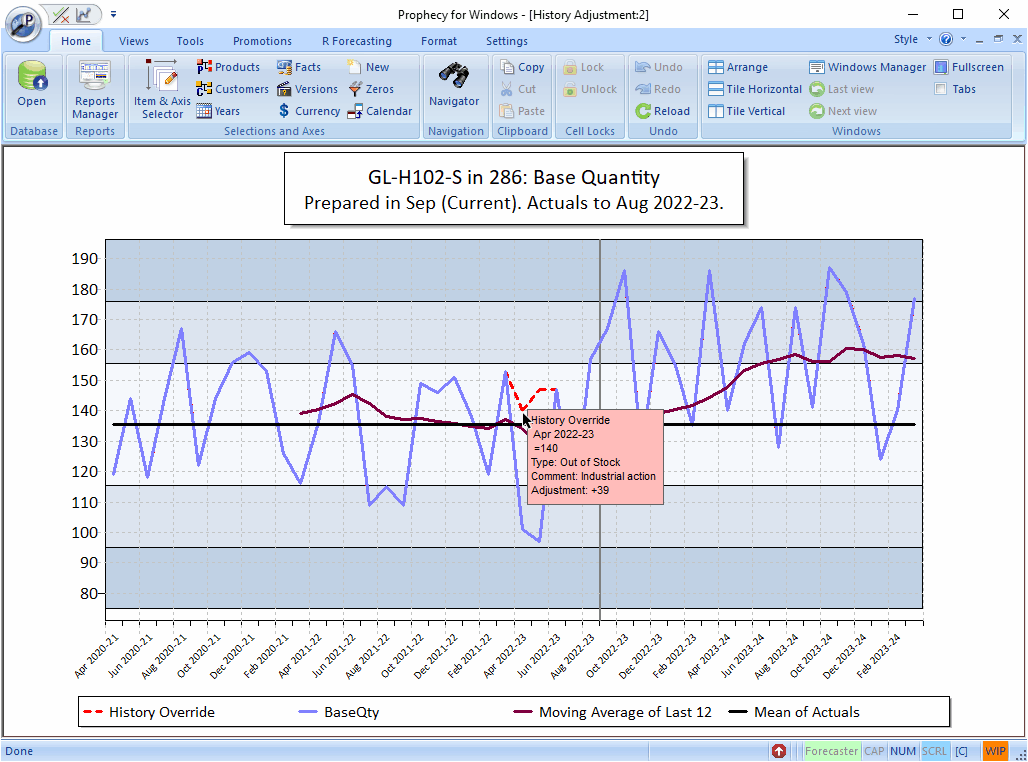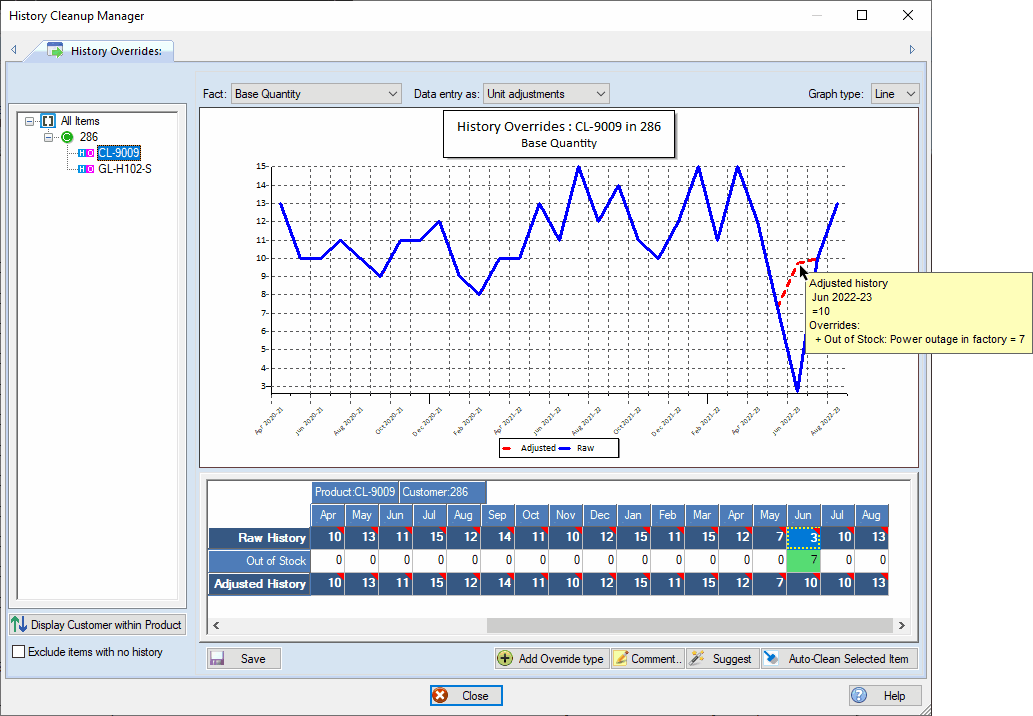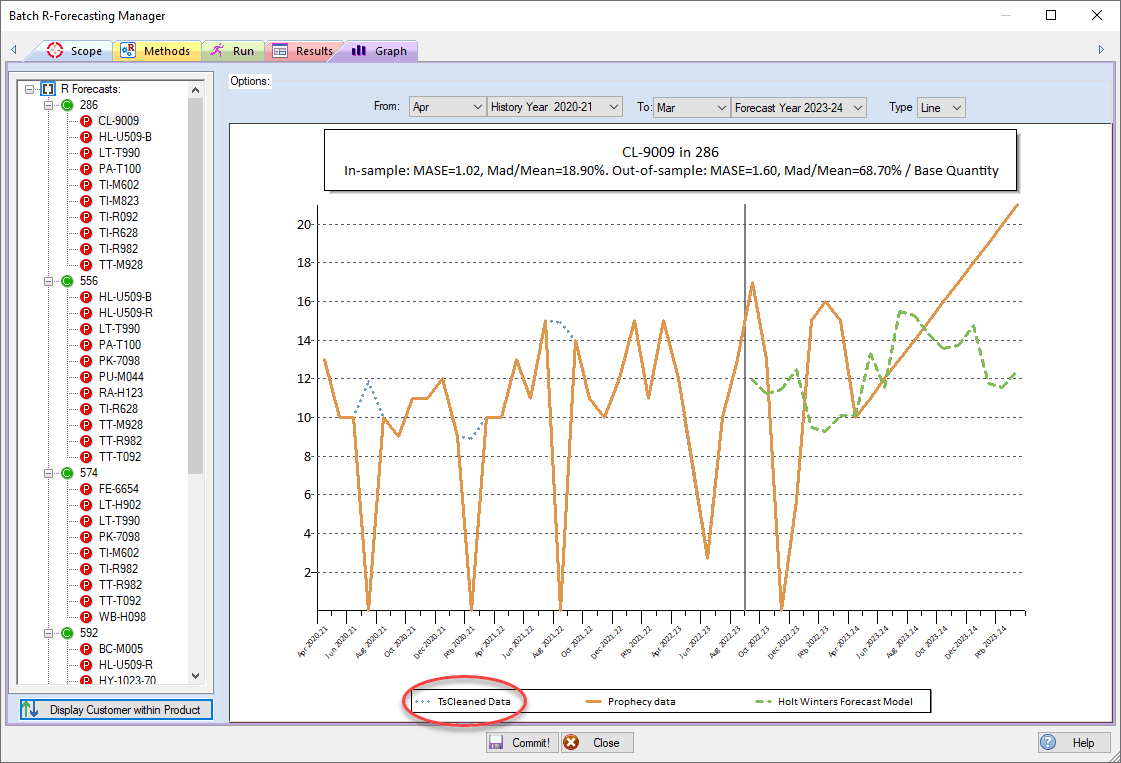
+44 (0)1494 785574

What do we mean by the term "demand forecasting". Is "demand forecasting" actually significantly different to "sales forecasting"? Where does either task fit into the process of "demand planning"?
""Demand forecasting"" means forecasting the real demand for a product, independent of any supply constraints. It's what the end customer / consumer would buy if supply was limitless.
"Sales forecasting" means forecasting the actual sale of a product, including all supply contraints. If you are using historical sales, which include out of stocks and other supply disruptions to forecast future sales then, semantically, you are sales forecasting.
The term 'sales forecasting' is also frequently used to describe the 'deals management' part of a CRM (customer relations management) system. By this, we mean tracking deals, the probability of getting deals, a means of reporting prospects' business potential within a sales reporting structure.
The context and purpose of Prophecy is different. Prophecy is focussed on helping forecasters produce a great 'sales forecast' ('demand forecast') of (largely) recurrent items, through time, through channels such as major customers, customer groupings or internet channels. This is different to CRM's "I forecast I will get this deal, with this customer, at this time, for this value".

Given the semantic difference between demand and sales forecasting outlined previously, it seems logical that you should be striving to forecast demand - i.e. what the customer really wants. At least in the first instance.
The demand planning process should then take the unconstrained demand forecast and adjust for any supply constraints. In other words, if the 'demand' is for 100 units but you are only able to produce or bring in 80 units then the demand planning process will turn the demand forecast of 100 units into a sales forecast of 80 units.
Most forecasting processes use previous sales history as the basis, in part or whole, of the forecast.
However, your ERP invoice history contains what was actually sold, not what was demanded. The customer may have wanted 100 units but you were only able to deliver 80. Therefore, 80 shows up in the history, and you base your future forecast on the sales history without realising the shortfall of 20 units.
It gets more complicated than that. Is the 20 units a lost sale, or will some of the unfulfilled demand be added back to the next period's sale? One disruption to supply can have a ripple effect into several future periods, making history misleading and difficult to interpret.
An alternative to using invoice history is to use order history - i.e. what the customer actually ordered. Unfortunately, similar difficulties apply. Suppose they ordered 100 units in period 1 but you were only able to supply 80. If they order 120 units in period 2, is that additional 20 a catch-up (in part or total) of the shortfall in delivery from the previous period? If so, blindly using orders history may cause you to double-count some of the demand.
Whichever sales history you use, it becomes necessary to adjust it for events that caused the recorded data to diverge from the real, actual demand.
Here is a selection of screenshots which demonstrate how Prophecy helps demand forecasters adjust history from the ERP history data read. The examples show out of stocks as the only adjustment. But you can add any number of adjustment classes. For example, you can remove promotional peaks and troughs in order to statistically forecast the underlying trend of demand. Then add known promotions into the statistical forecast generated from the adjusted history.
Tip:Click the image to view a screenshow of all the sample images at full browser width.


